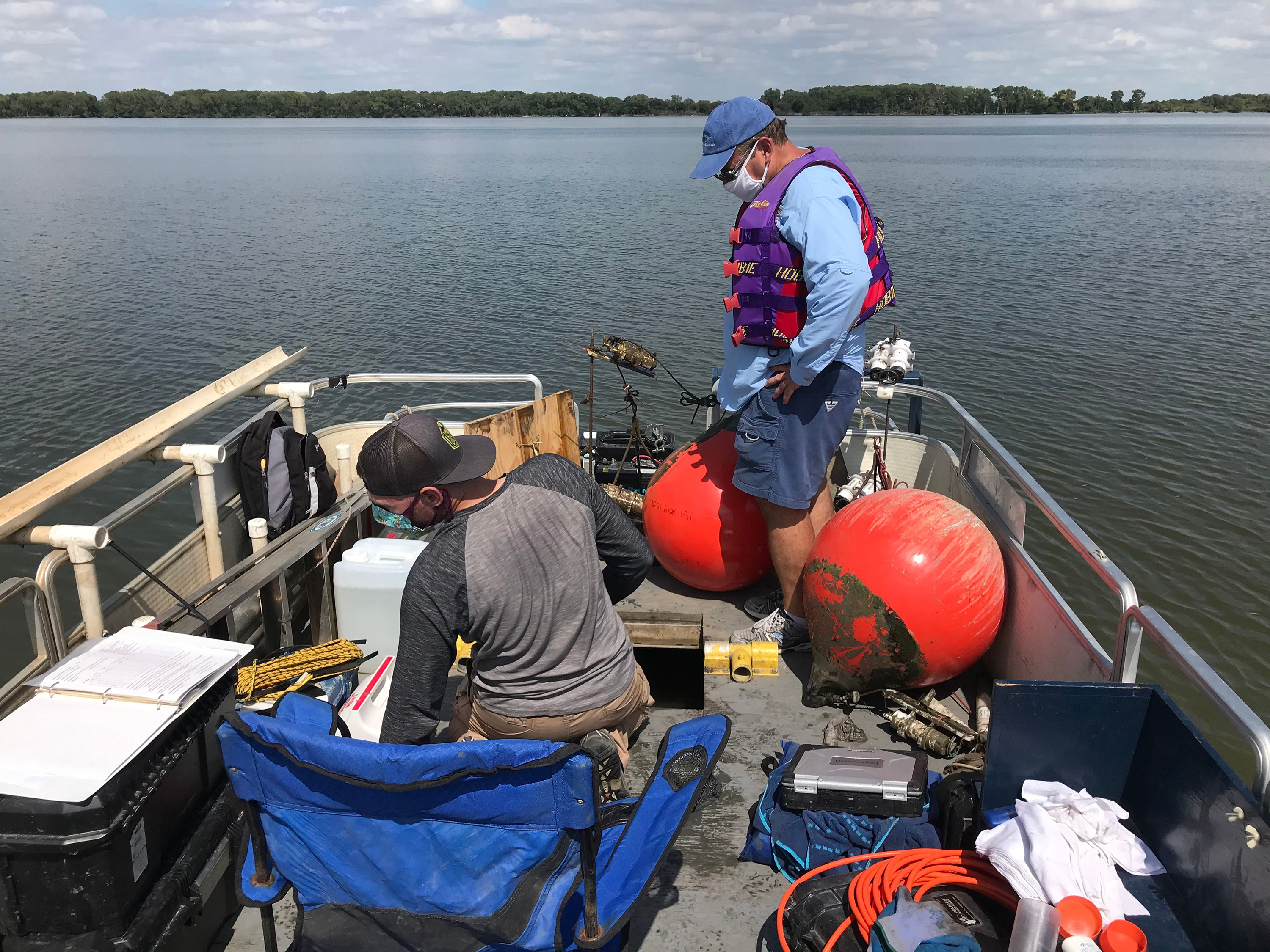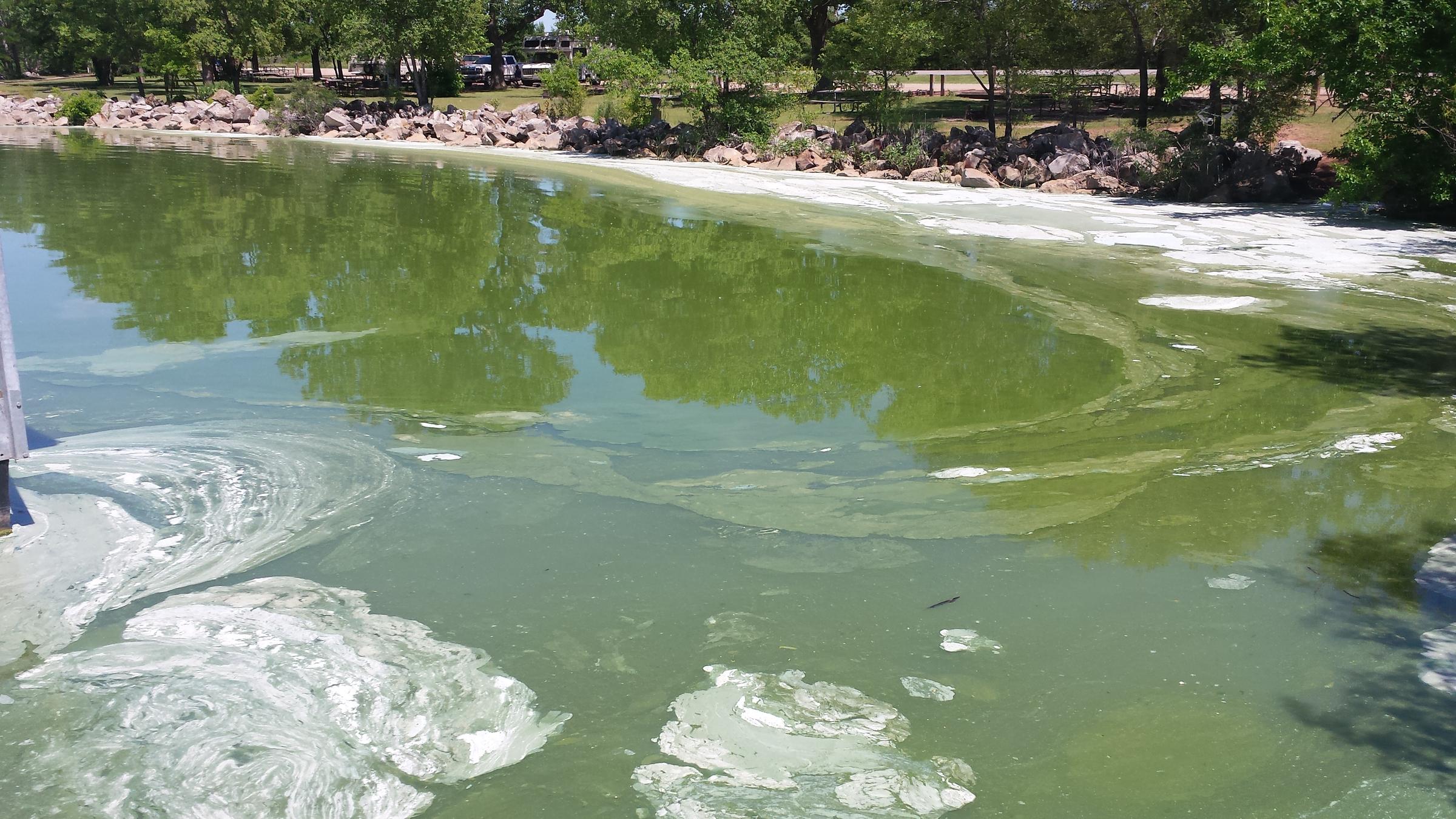Current Project
WSU and KU researchers join forces to fight blue-green algae
 Brian Bohnsack
Brian BohnsackDr. Brian Bohnsack (standing) works with a team of researchers to collect blue-green algae samples from Marion Reservoir in Kansas.
Researchers from Wichita State University Environmental Finance Center (WSU EFC) and Kansas Biological Survey (KBS) at Kansas University have combined forces to help battle the problematic blue-green algae bloom events that are creating havoc in many Kansas water bodies. The research team is assessing the potential of commercially produced chemical compounds to control or reduce algae blooms in Marion Lake, Kansas.
The project combines the expertise of researchers from WSU and KU in an innovative approach. WSU researchers are contributing their expertise in nutrient management in municipal sewage treatment plants, and KU researchers are utilizing their expertise with nutrient management in lakes, ponds and riverine environments. A leading cause of the algal blooms is believed to be excessive nutrients in the water from various sources. The researchers are advancing blue-green algae research while also gaining an enhanced understanding of nutrient management. The project is funded by a Kansas Department of Health and Environment grant.
The WSU EFC’s efforts are led by senior program manager, Nicholas Willis. Nick has experience in municipal sewage treatment plant operations and currently leads a separate project assessing the efficacy of commercially produced chemical compounds on reducing phosphorous levels in sewage treatment plants across Kansas. The KBS research is being led by research professor Ted Harris. Ted has experience with algal bloom research in reservoirs and lakes, as well as predictive modeling with nutrients. Other researchers on the project include Brian Bohnsack, WSU EFC program manager, Don Huggins, KBS senior scientist.
Blue green algae occur naturally in the environment, but can become a health issue when their population expands dramatically and algal blooms occur. The Kansas Department of Health and Environment (KDHE) began monitoring programs for the harmful blooms in 2010 due to previous occurrences of algal blooms and public health concerns. The effects of blue-green algae blooms can range from mild skin irritations to potential fatal effects on humans. It can also be lethal to animals, including pets and livestock that are exposed to or ingest waters where a bloom is occurring.
The researchers collected water and sediment samples from Marion Lake in early 2020. They tested the samples to assess if commercially produced compounds commonly used by lake and sewage treatment plant managers were effective at reducing phosphorous levels. Phosphorous is the primary nutrient blue-green algae need to fuel bloom events. Researchers believe that significantly reducing available phosphorous in the water and sediment will reduce algal bloom events that cause detrimental effects for lake recreational users, as well as public drinking water treatment plants that use lake water to provide drinking water. The researchers also installed buoys on the lake with sensitive water quality monitoring equipment to monitor the lake’s water quality this summer. Algal blooms are most common during the summer months when the warm water temperatures promote algal growth.
WSU EFC and KBS have provided Kansas Department of Health and Environment with tentative research results and are working to provide final research findings and recommendations on this vital water quality issue which affects Kansas’ water bodies and water bodies globally.
Contact: Nicholas Willis, Program Manager, nicholas.willis@wichita.edu, (316) 978-6538.


